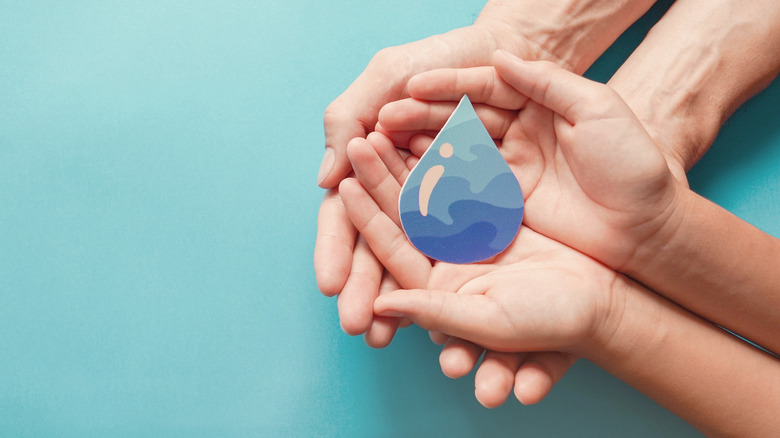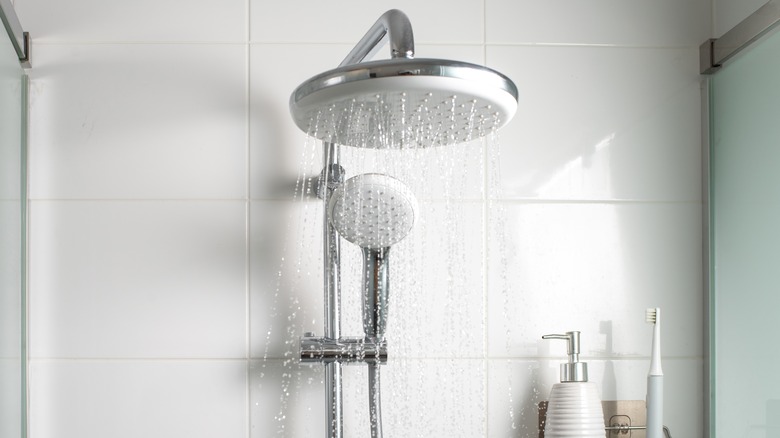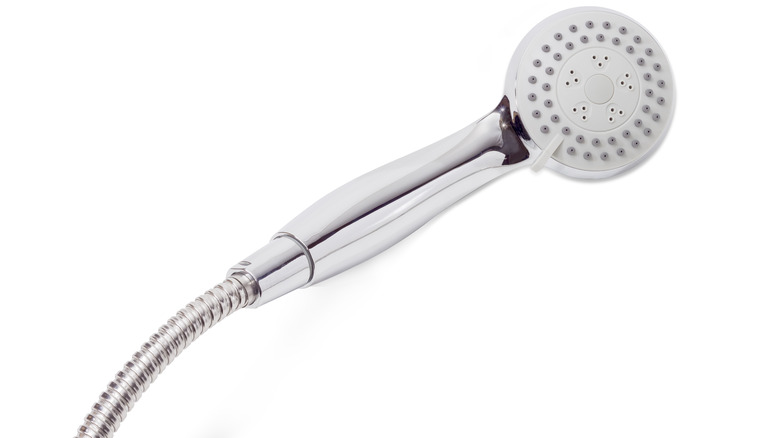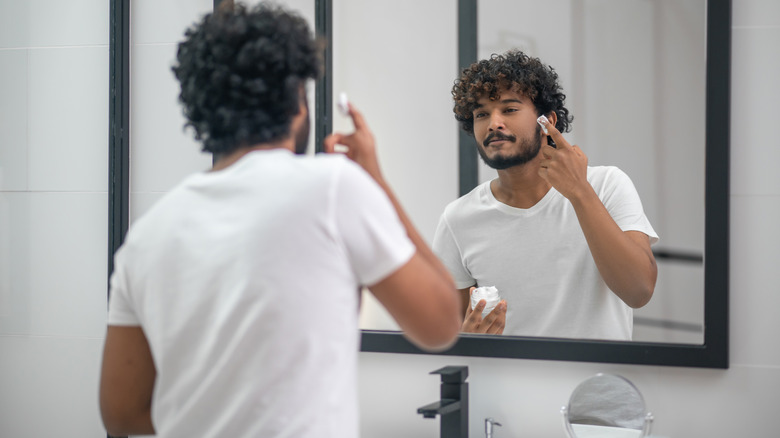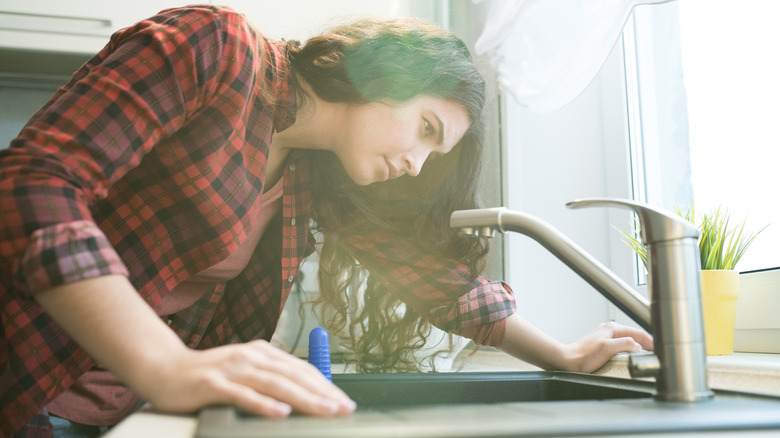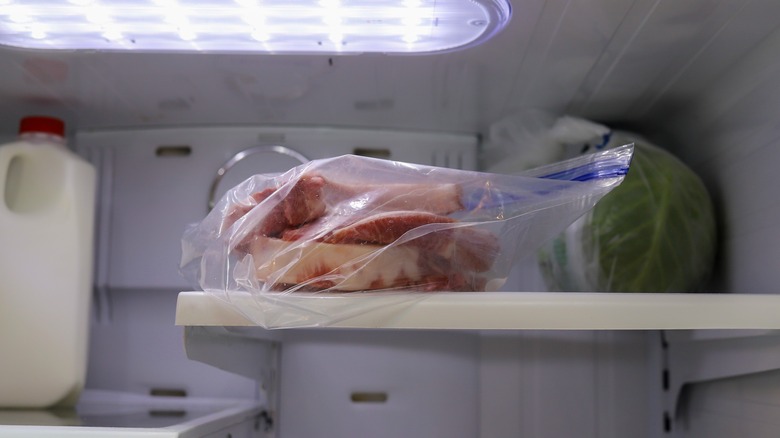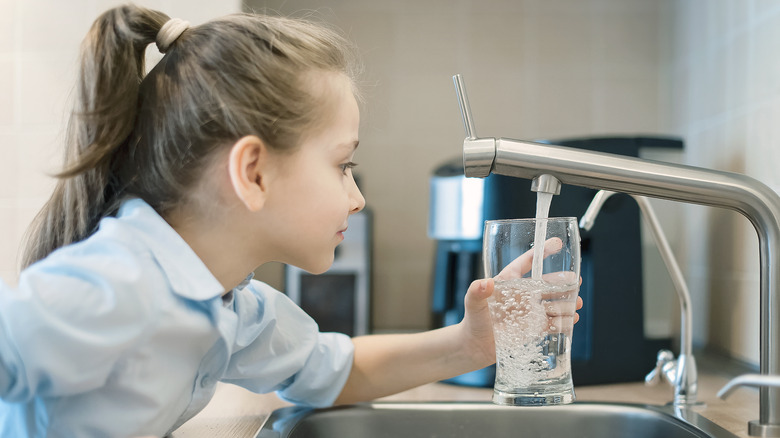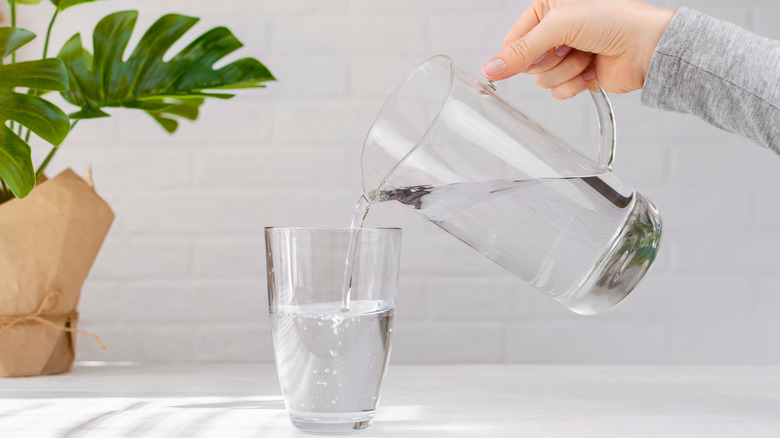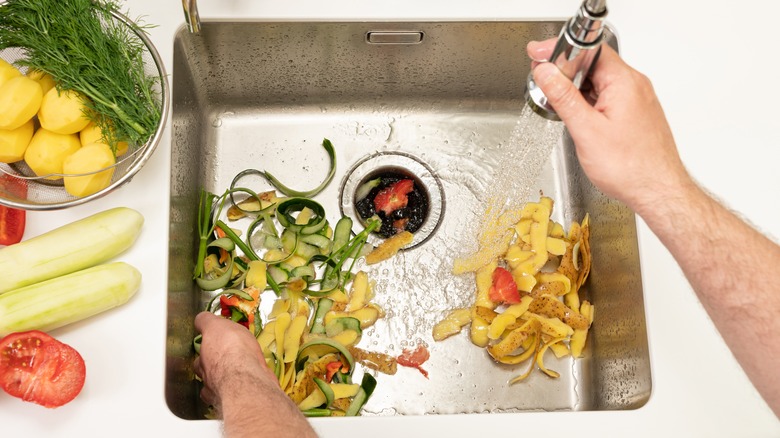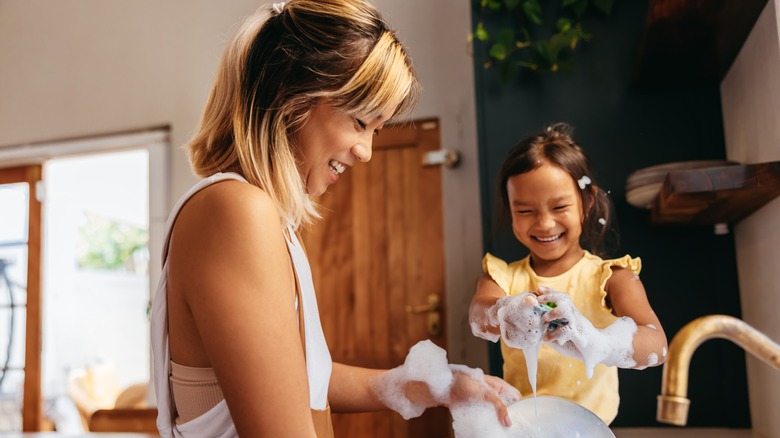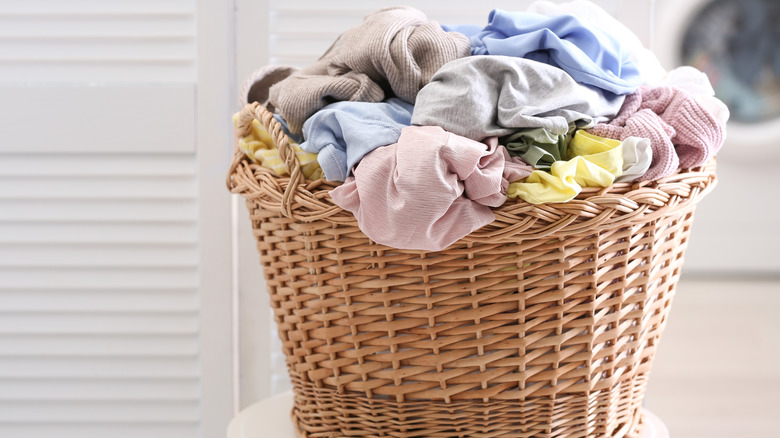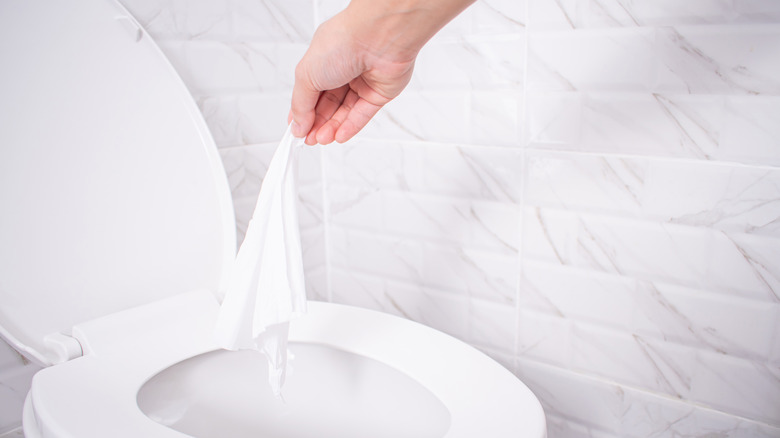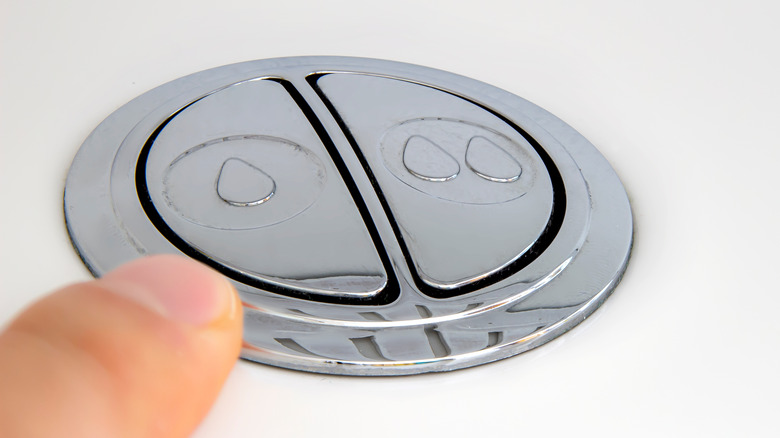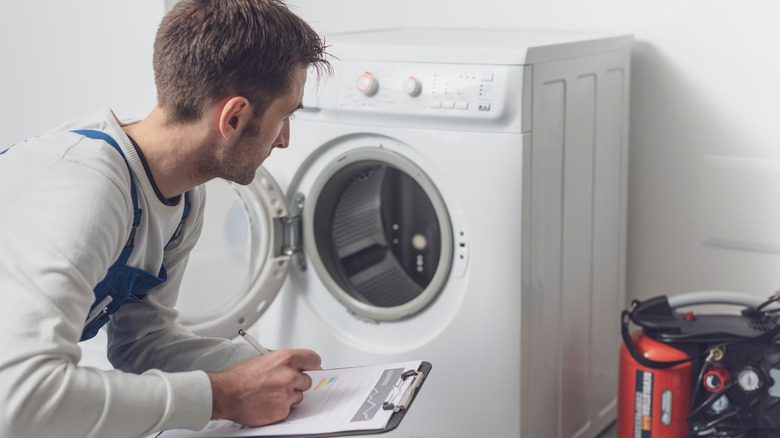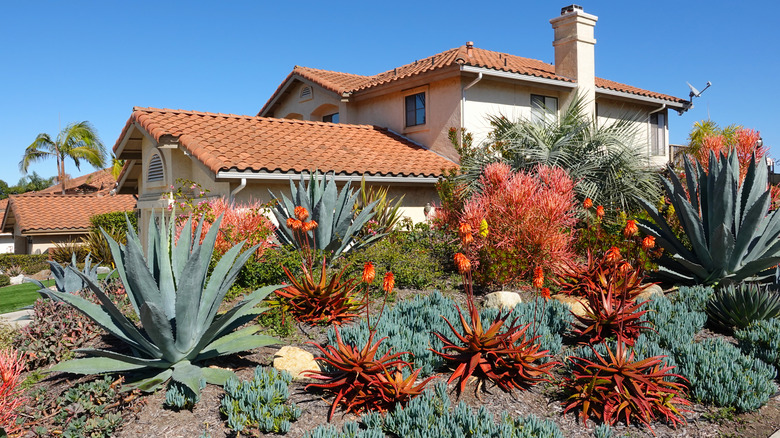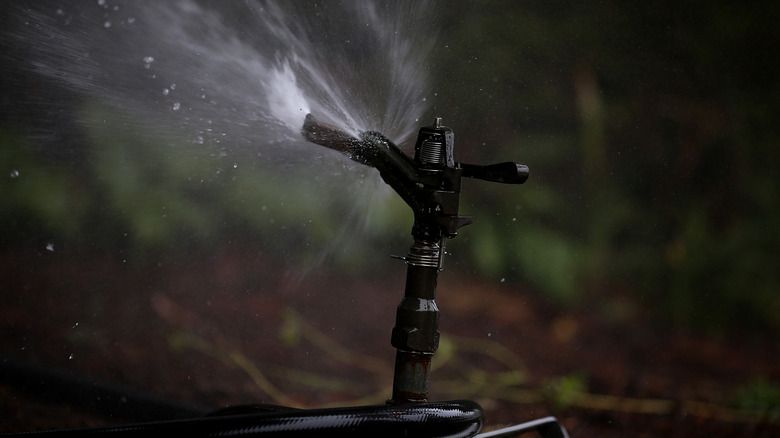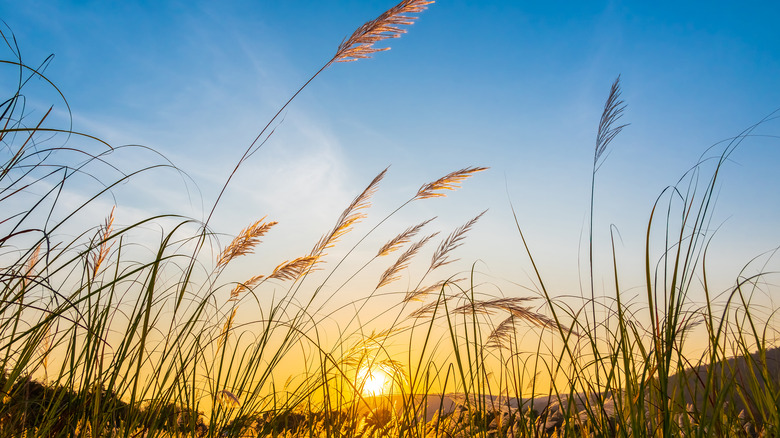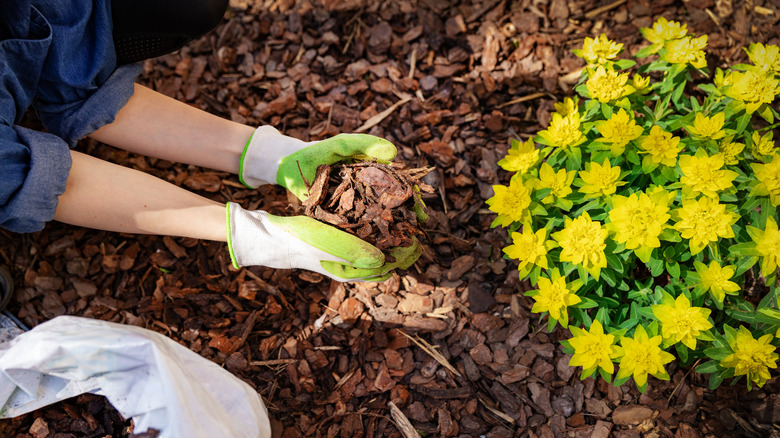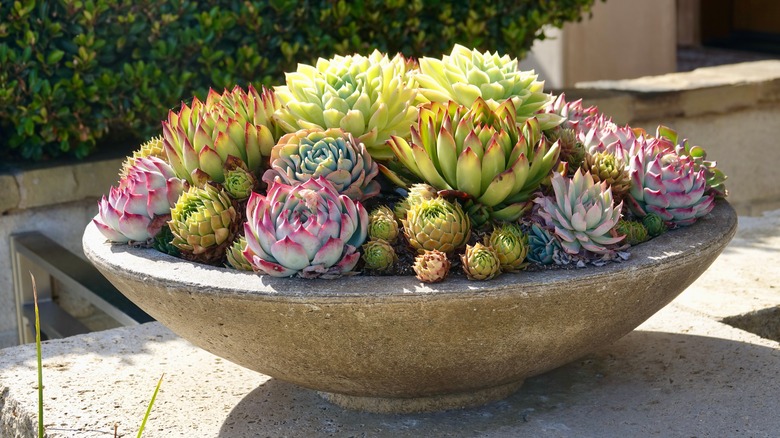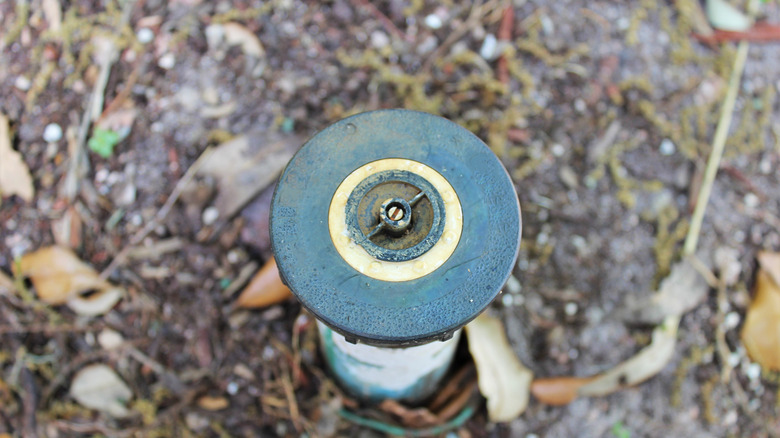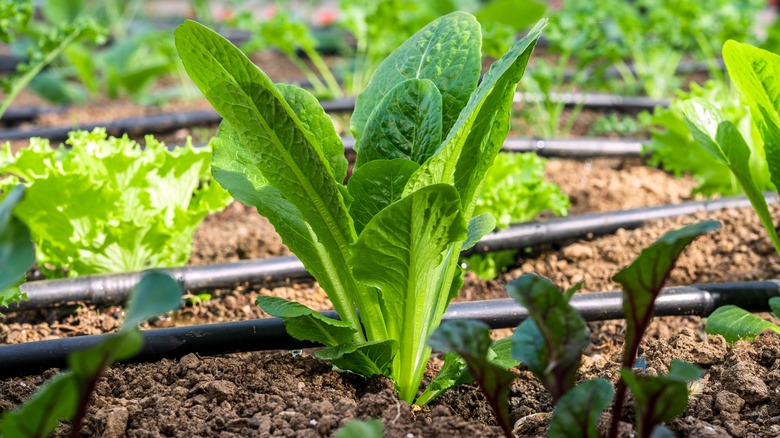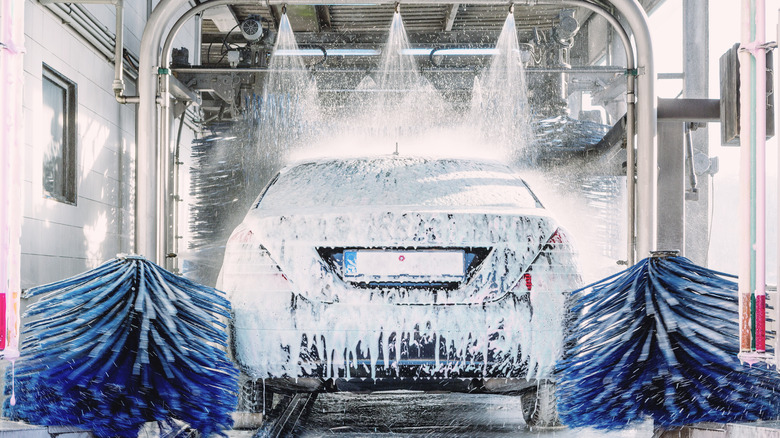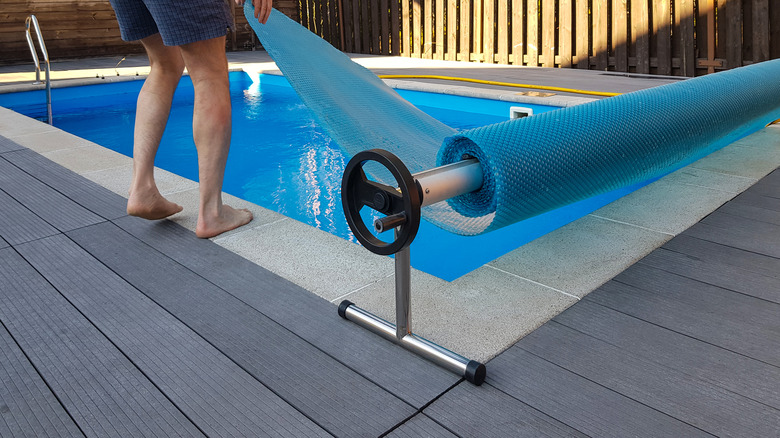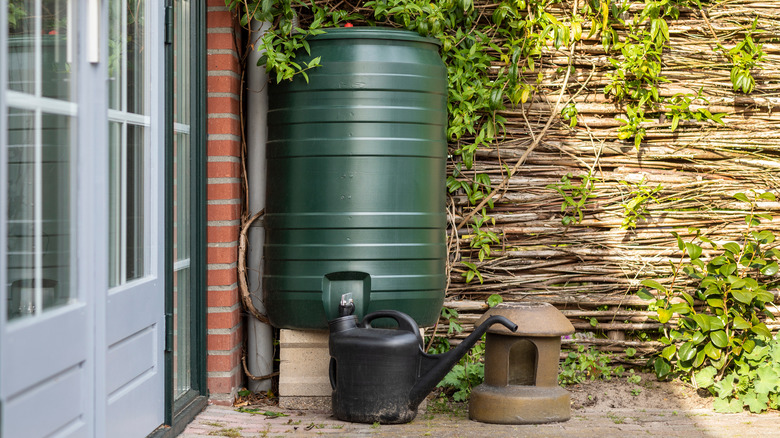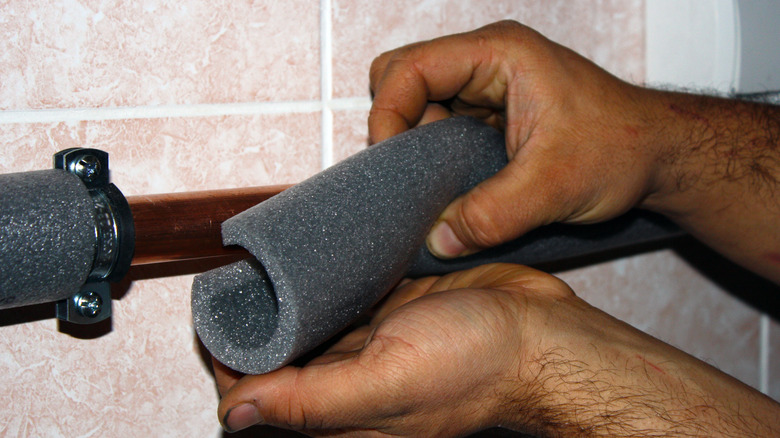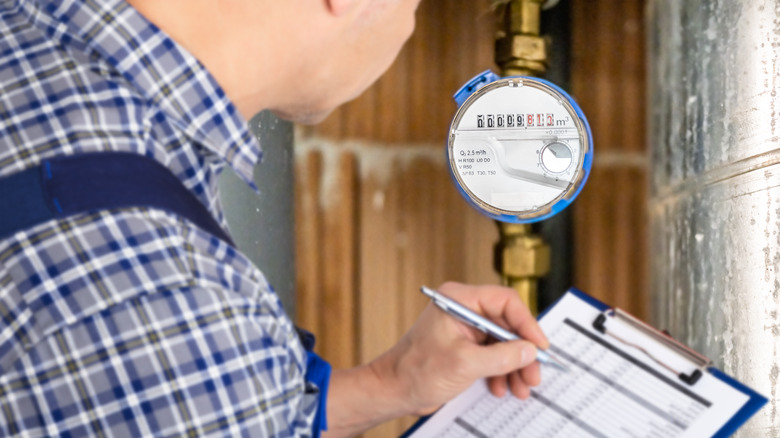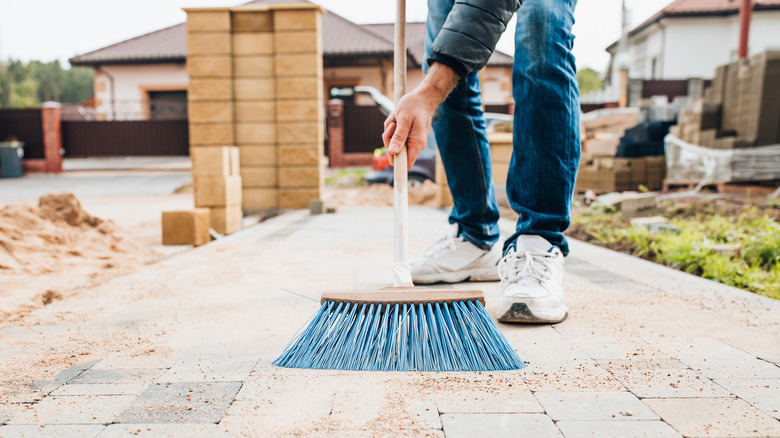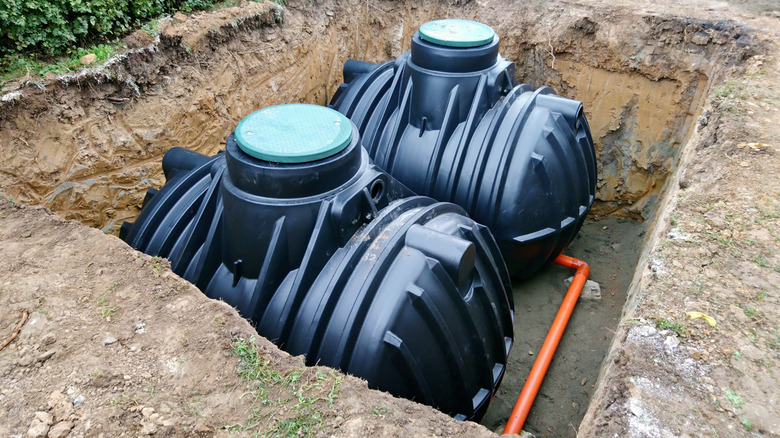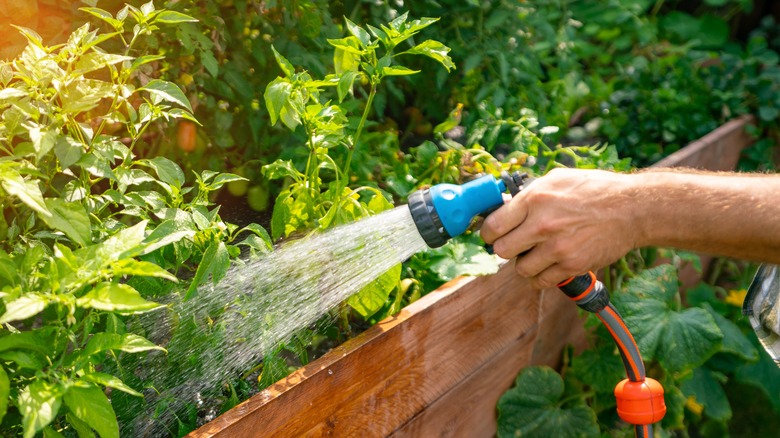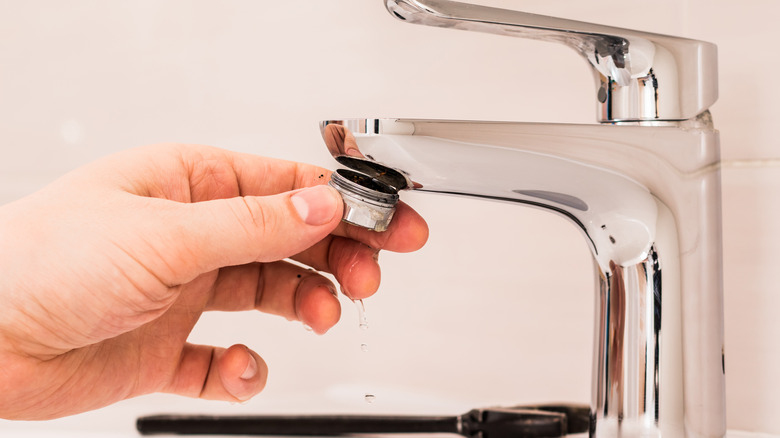30 Easy Ways To Conserve Water In Your Home
Words cannot describe the importance of water as a resource. Yet, once in a while, we may forget to conserve. Fortunately, conserving water at home is simple and provides many benefits — aside from the obvious. When you find ways to avoid wasting water, you can save on your utility expenses, notes Energy Star. You may even notice that many household tasks can still be completed effectively and efficiently when using less water.
Furthermore, you would not have to sacrifice the aesthetic appeal of your landscaping to incorporate methods of conserving water. It's often as easy as getting the whole family involved in looking for ways to use less water and changing up a few habits. So we bring you these 30 ideas that apply to almost every part of your home when comes to conserving water. And yes, we also have some advice for caring for your outdoor spaces and your vehicles by using less water.
1. Take a fast shower
First off, showering instead of taking a tub bath saves gallons of water daily. However, cutting down on your shower time saves even more. In fact, as mentioned in The Right to Shower, you can conserve about 60 gallons a month by cutting your shower time by just one minute.
2. Replace shower head with a water-saving option
Being that some shower heads save water more effectively than others, you might opt for replacing your current shower head. The water-saving variety produces similar, if not more pressure than the regular type while still decreasing the number of gallons per minute, according to Leaf Score.
3. Turn off the faucet when brushing teeth
You may have already heard your parents tell you this as you were growing up. However, this bit of wisdom doesn't just save money on your utility bill, it also saves water. So remember to turn on the water only to rinse your toothbrush and mouth, suggests the United States Environmental Protection Agency.
4. Partially fill the sink when shaving
Just like refraining from leaving the faucet turned on while brushing, the same goes for shaving which is also mentioned by the EPA. All you need is an inch or two of water in the sink to be able to rinse your razor as you shave.
5. Check indoor faucets for leaks
Another water-saver involves checking for leaks. As time passes, fixtures age and need replacing. So even if you see one drop occasionally, you can take a wrench and tighten up the hardware or replace it. After all (per the Colorado State University Extension), you could save 140 gallons weekly just by fixing a leak.
6. Thaw food without using water
Thawing out food in the refrigerator or microwave is just as safe as thawing them out in water (per the USDA). You may have to plan ahead and place the item in the fridge a day or two ahead of time. However, the microwave works well when you have less time.
7. Drink tap water
Considering the water-bottle industry is not well regulated, and the product doesn't come from a spring in a mountain range as is often advertised on the label (per Treehugger), you can save money and gallons of water by opting for tap water. Plus, you can always add a filter to your faucet if the water is hard.
8. Keep a container of water in the fridge
According to Trvst, keeping a container filled with water in the refrigerator will help with conservation. The reason behind this relates to kicking the habit of running the faucet until the tap water turns cold, which leads to excessive waste. This way, your drinking water will always be ready to go.
9. Avoid using the garbage disposal
As mentioned by the AARP, another handy practice that helps with conserving in more ways than one relates to composting. Not only does composting contribute to your garden's well-being, but it also saves water that's used when you turn on the garbage disposal.
10. Wash dishes with minimal running water
If you hand wash your dishes, Colorado State University Extension recommends partially filling both sides of the sink. By partially filling one side for rinsing, you'll use less. Alternatively, you can try running the water slowly when rinsing. Another conservation idea is to invest in a dishwasher, which generally uses less water.
11. Wash only full loads of laundry
Laundry has to be done on a regular basis but to save water and time, you can opt for only doing full loads, recommends the Indiana Department of Health. Furthermore, you won't have to do your laundry quite as often.
12. Keep from using the toilet as a disposal
Remembering that the toilet serves one purpose will help you to save water. This means getting the entire family on board with not using the toilet as a means of getting rid of facial tissues, hair, sanitary napkins, and other garbage explains the Indiana DOH. Besides, this also prevents clogging.
13. Install a high efficiency toilet
If you want to up your water-saving game, you can also invest in a high-efficiency toilet, as recommended by Home Water Works. Compared to older models, which flush over 3 gallons of water, the high-efficiency type uses just over a gallon.
14. Change to an HE washer
A high-efficiency washer offers an additional means of water conservation. The HE washer may not need as much water as your traditional models. However, they still effectively clean your clothes without the worry of delicates or stretchy clothing getting pulled out of shape, notes Bellingham Electric.
15. Consider xeriscaping
If you are looking for a landscaping option that saves water and requires less maintenance, consider xeriscaping. This type, according to National Geographic, offers beautiful choices of plants that are drought resistant. Likewise, xeriscaping involves more than just incorporating sand or gravel. You can include more efficient irrigation systems that save 50 to 75% more water.
16. Water at dawn
If you choose to keep your grass lawn, you might consider watering at dawn. You might wonder why sunrise offers better timing than dusk — as noted by the Lawn Doctor, you have less chance of the water evaporating during the pre-dawn hours since the wind is calm and the sun is not up yet.
17. Avoid watering on a windy day
Just like watering when the sun is out wastes water, so does watering when the wind kicks up (as cautioned by Lawn Love). The airflow drives the water droplets away from your lawn and speeds up evaporation. Therefore, watering when there is no wind is more favorable.
18. Place mulch around plants
Adding a layer of mulch around bushes, trees, and shrubs holds the moisture in longer than if the ground was exposed, thus decreasing the need to water often, as mentioned by Contra Costa Water District.
19. Select drought-resistant plants
To cut down water use in your garden, you can include plants that don't require frequent watering. Some examples are succulents, varieties of sage, the white mistflower, the hummingbird bush, the desert willow, and many more (per The Ladybird Johnson Wildflower Center).
20. Check sprinkler systems for leaks
One other prudent practice in gardening and conserving water is checking for leaks in your sprinkler system. According to Stream Labs, some signs of leaks include a yellowing lawn, water accumulation around a sprinkler, and an increase in your water bill. Thus, repairing a leak immediately saves water and money.
21. Incorporate irrigation systems
There are irrigation systems that are made specifically for conserving water while keeping plants hydrated. According to the Washington State Department of Health, you can install a drip irrigation system, which is situated on the ground, hence less chance for evaporation.
22. Take your car to a car wash
Also, if your community has an eco-friendly car wash that uses a water reclamation system, you might consider cleaning your vehicle there instead of on your driveway, suggests Maryland Department Of The Environment. Less water is used, and there's less waste.
23. Cover your swimming pool
You can also save on water usage if you have a pool. You may have to invest more time and money on chemicals to stave off algae, but you can conserve up to 50% more water By using a pool cover, notes Energy.gov.
24. Keep a rain barrel for irrigation
In addition to installing micro and drip irrigation systems, you can keep a barrel or drum for catching rain for watering plants (per West Virginia Extension). An added bonus is that some containers come with a spigot for easy pouring into a water can or bucket.
25. Insulate pipes that are at risk of freezing
Looking around your home for pipes that are located in areas that are exposed to extreme temperatures in the winter allows you to protect the plumbing and your home from damage. Plus, you save water because insulated pipes retain heat; thus no more waiting for hot water, as mentioned by Forbes.
26. Check water meter for leaks
Aside from monitoring your sprinkler system, you can also check your meter, which is recommended by the Department Of Water Supply. Looking for irregularities in its readings may not tell you necessarily where the leak is, but at least you will be aware.
27. Sweep off sidewalks and driveway
While sweeping might not seem like a practice in conservation, this actually relates to your chosen method for clearing your driveway, walkways, and sidewalks. The Connecticut Department of Energy and Environment Protection explains that you will save water by avoiding the hose or power washer, while still achieving the same goal.
28. Look into gray water conservation
Although this method of recycling water might take some work, in the long term, you're looking at less frequent watering. Gray water conservation involves installing a drainage system from the sinks, shower, or washer to the garden. The gray water itself is harmless and can be reused for irrigation (per Greywater Action).
29. Reduce watering
Also noted by the Washington State Department of Health, you can water your lawn less often, and it will still thrive. In fact, two to three watering sessions during the week should keep the plant life sufficiently hydrated.
30. Install aerators onto your faucets
One other useful tool in water conservation is the aerator, which is a small part with a metal mesh that fits at the end of your faucet. The aerator serves many purposes from filtering out impurities to lowering the amount of water that comes out, explains Denver Water.
